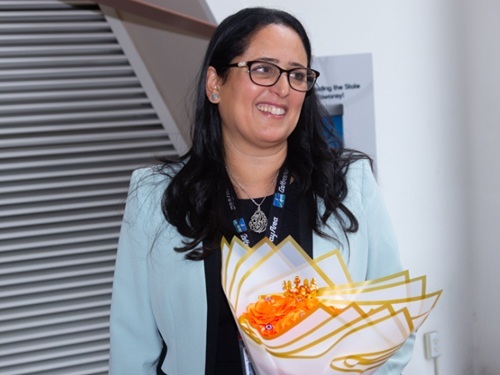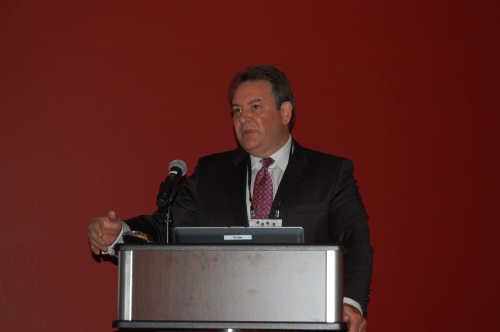Technology is rapidly changing all aspects of public and private sector operations, according to Matthew Garrett, director of the Oregon Department of Transportation. And the pace of change is only going to accelerate in the near future, so state DOTs need to ready themselves for both the “challenges and opportunities” that level of change will present them and their constituents.
Speaking at the American Association of State Highway and Transportation Officials 2018 Joint Policy Committee meeting in Spokane, Washington, on July 17, Garrett (seen below) said that “this is the most interesting and creative time in the human world; a time of rapid accelerating change, and we need look no farther than technology” to see its impact.
 “Technology threatens to remake every aspect of every company and industry that we deal with,” he stressed. “So you must ask yourself these questions – what do you foresee the most significant challenge to retraining workers for the new jobs of this brave new world? Is the private sector focused on that challenge? Is our educational system, which is built around four-year degrees up to the challenge in a world that needs continuous training?”
“Technology threatens to remake every aspect of every company and industry that we deal with,” he stressed. “So you must ask yourself these questions – what do you foresee the most significant challenge to retraining workers for the new jobs of this brave new world? Is the private sector focused on that challenge? Is our educational system, which is built around four-year degrees up to the challenge in a world that needs continuous training?”
Garrett noted that this movement forward “can be exciting and refreshing” and lead to new ways of doing business. “But it also demands that we must adapt and support a culture that’s reimagining our work structure and learning platforms, that’s moving to continual education training and retraining across all portfolios within a state DOT.”
Garrett serves as the chair for AASHTO’s committee on environment and sustainability and noted that a survey being conducted of his committee’s members, which is still open at https://www.surveymonkey.com/r/aashtofastact.
It seeks to gather details on “roadblocks, slowdowns, or other frustrations” in state DOT environmental work for the committee to address at the national level as reauthorization of the federal transportation bill – last reauthorized in 2015 as the Fixing America’s Surface Transportation or FAST Act – begins in earnest.
Tim Hill (seen below), environmental services administrator for the Ohio DOT and vice chair of the committee, added that “there is huge amount of change going on across the board” in the environmental sector.
 “It’s a very exciting time to be in environmental and change is coming from every angle,” he said. “Our view is, if one state having an issue, most likely other states are as well. So now we need to decide, is this the right time to push forward a change? Do we have the right examples and support in Congress to make a push for a change? It’s a long process to go through to make change across the board where environmental issues are concerned.”
“It’s a very exciting time to be in environmental and change is coming from every angle,” he said. “Our view is, if one state having an issue, most likely other states are as well. So now we need to decide, is this the right time to push forward a change? Do we have the right examples and support in Congress to make a push for a change? It’s a long process to go through to make change across the board where environmental issues are concerned.”
Yet Hill emphasized that “streamlining is the goal because we’re still having continued growth in environmental documentation requirements. We want to ‘get back to the basics’ for more reader-friendly formats.”
Oregon DOT’s Garrett noted in his remarks that the use of more sophisticated technological tools “potentially offers an opportunity to refine, but not dismantle, environmental regulatory safeguards. We seek efficiency and improve outcomes at lowest possible burden – that is our charge. The ‘simple push’ is that we support the environment and also support streamline regulation processes and that a focus on balancing the environment with the needs to streamline the regulatory process are not mutually exclusive.”
He also emphasized that in facing this “brave new world of change” it is time for state DOTs to “lace up, lean in, and know you are advancing the practice of transportation for this nation.”
 States
States
Dina El-Tawansy Appointed Director of Caltrans
July 11, 2025 States
States

